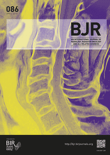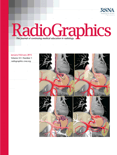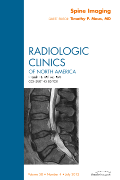
AMERICAN JOURNAL OF ROENTGENOLOGY
Scope & Guideline
Pioneering Insights in Radiology.
Introduction
Aims and Scopes
- Clinical Imaging Techniques:
AJR focuses on a wide range of imaging modalities, including MRI, CT, ultrasound, and radiography, with an emphasis on their clinical applications in diagnosing and managing various medical conditions. - Artificial Intelligence in Radiology:
The journal explores the role of artificial intelligence in enhancing diagnostic accuracy, optimizing workflow, and improving patient outcomes. This includes machine learning applications for image interpretation and predictive modeling. - Interventional Radiology:
AJR publishes research on interventional procedures, emphasizing minimally invasive techniques and their effectiveness in treating a variety of conditions, including cancer and vascular diseases. - Radiomics and Quantitative Imaging:
The journal highlights the use of radiomics—extracting large amounts of features from medical images—and its application in personalized medicine, particularly in oncology. - Health Policy and Economics in Radiology:
AJR addresses the economic aspects of radiology, including cost-effectiveness studies, policy implications, and the impact of healthcare regulations on imaging practices. - Education and Training in Radiology:
The journal emphasizes the importance of radiology education, offering insights into training methodologies, assessment strategies, and the integration of new technologies in educational programs.
Trending and Emerging
- Integration of Artificial Intelligence:
There is a significant increase in research exploring the integration of AI in radiology, focusing on applications in image interpretation, workflow optimization, and predictive analytics for patient management. - Personalized Medicine and Radiomics:
Emerging studies are increasingly focusing on the use of radiomics and personalized medicine approaches to tailor treatments based on individual patient imaging characteristics, particularly in oncology. - Telemedicine and Remote Radiology:
The COVID-19 pandemic has accelerated interest in telemedicine, with more studies addressing the role of remote radiology services and their effectiveness in patient care. - Health Equity and Access Issues:
A growing number of articles are addressing health equity and access to imaging services, highlighting disparities in care and emphasizing the need for inclusive practices in radiology. - Advanced Interventional Techniques:
AJR is seeing a rise in publications related to advanced interventional radiology techniques, showcasing innovative methods and their outcomes for treating complex conditions. - Impact of COVID-19 on Radiology Practices:
Research examining the impact of COVID-19 on radiology practices, including changes in workflow, patient management, and imaging utilization patterns, has become increasingly prominent.
Declining or Waning
- Traditional Imaging Modalities Without Advanced Techniques:
There has been a noticeable decline in papers focusing solely on traditional imaging techniques without advanced applications. As technology evolves, there is a shift towards integrating AI and advanced imaging algorithms. - General Reviews on Basic Radiology Concepts:
The journal has seen fewer submissions of general reviews that cover basic radiology concepts, as the focus has shifted towards more specialized and advanced topics. - Non-Interventional Studies:
There is a decreasing trend in non-interventional studies that do not involve direct patient outcomes or procedural advancements, as the journal increasingly prioritizes research that demonstrates clinical impact. - Single-Center Studies:
The prevalence of single-center studies has decreased as multi-center collaborations become more common, reflecting a trend towards broader research efforts that enhance generalizability. - Descriptive Studies Without Clinical Application:
Descriptive studies that lack a clear clinical application or relevance to current practice are becoming less frequent in the journal, with an increasing preference for studies that offer practical insights and implications.
Similar Journals

Radiologia Medica
Exploring the Frontiers of Nuclear Medicine and Imaging.Radiologia Medica, published by Springer-Verlag Italia SRL, is a premier Italian journal dedicated to the field of radiology, nuclear medicine, and imaging. With a rich history dating back to 1947, this journal has consistently provided cutting-edge research and findings, contributing significantly to advancements in medical imaging techniques and practices. As evidenced by its impressive Q1 rankings in both Medicine (Miscellaneous) and Radiology, Nuclear Medicine and Imaging, Radiologia Medica holds a prestigious position within the top tier of medical journals, ranked #11 out of 333 in its category and residing in the 96th percentile according to Scopus metrics. Although it is not currently offered as an Open Access journal, its robust subscription model supports extensive research dissemination. Researchers, professionals, and students alike will find invaluable insights and knowledge critical for advancing their understanding and practice within this dynamic field. Situated in Milan, Italy, Radiologia Medica continues to be an influential platform for the exchange of high-quality research, bridging various disciplines and promoting excellence in radiological science.

RADIOLOGIA
Innovating radiological practices for a healthier tomorrow.RADIOLOGIA is a distinguished journal in the field of Radiology, Nuclear Medicine, and Imaging, published by Elsevier España. With a rich history since its inception in 1961, this journal serves as a vital resource for professionals, researchers, and students interested in the latest developments and innovations in radiological practices. Although it is currently categorized in the Q3 quartile, its contributions continue to shape and advance clinical practices and research in radiology. RADIOLOGIA provides a platform for scholarly articles, reviews, and case studies that underpin the complexities of imaging techniques and nuclear medicine, while also addressing emerging trends and technologies. The journal is indexed with the ISSN 0033-8338 and E-ISSN 1578-178X, reflecting its accessibility to a global audience dedicated to enhancing patient care through advanced imaging methodologies. Readers can find the journal published in Spain and benefit from its commitment to disseminating pertinent research across diverse aspects of radiology.

European Journal of Radiology Open
Fostering Innovation in Radiology Through Open AccessThe European Journal of Radiology Open, published by Elsevier, has established itself as a pivotal platform for disseminating high-quality research in the field of radiology, nuclear medicine, and imaging since its inception in 2014. This open access journal, holding a commendable Q2 ranking in the esteemed 2023 Scopus categorization, seeks to foster a collaborative environment where researchers, professionals, and students can share innovative findings and advancements. Operating under the E-ISSN 2352-0477, this journal contributes to the broader scientific discourse with a commitment to accessibility and transparency, ensuring that cutting-edge research is available to a global audience. The journal's dual focus on rigorous peer review and rapid publication processes underscores its importance within the academic community, aiming to empower professionals with the latest insights in the dynamic landscape of medical imaging.

BRITISH JOURNAL OF RADIOLOGY
Advancing Radiology Through Innovation and ExcellenceBritish Journal of Radiology is a leading peer-reviewed journal published by the British Institute of Radiology, dedicated to advancing the field of radiology, nuclear medicine, and imaging. With a prestigious history dating back to 1945, this journal is at the forefront of disseminating cutting-edge research and innovations that significantly impact clinical practice. Currently enjoying a Q1 ranking in the field of radiology and Q2 in general medicine for 2023, it is recognized for its rigorous standards and high-quality content, ranking #87 out of 333 in Scopus for specialties related to Medicine, Radiology, Nuclear Medicine, and Imaging, placing it in the 74th percentile. Researchers, professionals, and students are encouraged to engage with the latest findings and comprehensive reviews presented within its pages, which contribute not only to academic discourse but also to the evolution of practice in the wider medical community.

RADIOGRAPHICS
Empowering Radiologists with Cutting-edge ResearchRADIOGRAPHICS, published by the Radiological Society of North America (RSNA), is a premier academic journal dedicated to the field of radiology, nuclear medicine, and imaging. With an impressive impact factor and recognition in the top quartile (Q1) of both Medicine (miscellaneous) and Radiology, Nuclear Medicine and Imaging categories, RADIOGRAPHICS stands out as a leading platform for disseminating high-quality research and clinical findings. Since its inception in 1985 and projected to run until 2024, the journal has consistently provided essential insights into cutting-edge imaging techniques and advancements in radiological practices, making it invaluable for professionals, researchers, and students alike. Although it does not offer open access, the journal continues to flourish with a robust reputation, ranked 35th in its field according to Scopus, placing it within the 89th percentile of its category. With an unwavering commitment to enhancing the understanding and application of radiological sciences, RADIOGRAPHICS remains a pivotal resource for advancing knowledge and expertise within the medical community.

Japanese Journal of Radiology
Pioneering Insights in Radiological PracticesThe Japanese Journal of Radiology, published by SPRINGER, serves as a premier platform for disseminating cutting-edge research and clinical advancements in the fields of radiology, nuclear medicine, and imaging. With an ISSN of 1867-1071 and E-ISSN 1867-108X, this journal has established itself as a vital resource for practitioners, researchers, and students alike. Renowned for its high-quality peer-reviewed articles, it currently enjoys a respectable impact factor within the Q2 category of Scopus rankings, placing it in the 69th percentile among 333 journals in its field. The journal has seen consistent convergence of research from 2009 to 2024, further underscoring its commitment to advancing the understanding of radiological practices. Importantly, the journal offers Open Access options to facilitate widespread dissemination of knowledge, ensuring that vital research reaches its audience without barriers. Addressed in Japan, the Japanese Journal of Radiology plays a critical role in enhancing the global discourse on medical imaging, making it an essential resource for anyone engaged in this dynamic field.

EUROPEAN JOURNAL OF RADIOLOGY
Transforming Patient Care Through Radiological ResearchThe European Journal of Radiology, published by Elsevier Ireland Ltd, is a premier peer-reviewed journal in the fields of radiology, nuclear medicine, and imaging. Established in 1981, it has carved a significant niche within the academic community, showcasing innovative research that enhances medical imaging practices and improves patient care. With an impressive ranking in the Q1 category for both Medicine (miscellaneous) and Radiology, Nuclear Medicine, and Imaging in 2023, the journal is recognized globally for its commitment to advancing scientific knowledge and improving imaging methodologies. The journal's Scopus ranking of #60/333, placing it in the 82nd percentile, underlines its reputation for high-quality research and scholarly contributions. While traditionally a subscription-based journal, it continually evolves to meet the demands of the academic landscape, aiming to bridge the gap between research and clinical practice. Researchers, healthcare professionals, and students alike can benefit from exploring its extensive archives and current publications, which are curated to foster education and innovation in the medical imaging domain.

ROFO-FORTSCHRITTE AUF DEM GEBIET DER RONTGENSTRAHLEN UND DER BILDGEBENDEN VERFAHREN
Transforming the Landscape of Imaging TechniquesROFO-Fortschritte auf dem Gebiet der Röntgenstrahlen und der bildgebenden Verfahren, published by Georg Thieme Verlag KG, is a pivotal journal in the fields of radiology and nuclear medicine, offering invaluable insights for researchers, healthcare professionals, and students alike. With an ISSN of 1438-9029, this journal has been a stalwart of scientific communication since its inception in 1975, actively contributing to advancements in imaging techniques and radiation therapy. Although it operates under traditional access, the journal maintains a respectable standing, reflected by its Q3 ranking in Radiology, Nuclear Medicine and Imaging and Q4 in Medicine (miscellaneous), highlighting its significance in the scholarly community. Its coverage spans a wide array of topics pertinent to diagnostic imaging and therapy protocols, making it an essential resource for anyone seeking to understand the complexities of modern radiological practices. As the journal continues to evolve through 2024, it invites contributions that enrich the dialogue around technological innovations and clinical applications in the realm of imaging modalities.

Journal of Clinical Imaging Science
Unlocking New Perspectives in Clinical ImagingWelcome to the Journal of Clinical Imaging Science, a dedicated platform for disseminating pioneering research in the field of radiology, nuclear medicine, and imaging. Published by SCIENTIFIC SCHOLAR LLC, this peer-reviewed journal offers a prominent forum for researchers, professionals, and students to share insights and advancements that push the boundaries of clinical imaging practice and technology. With a proud history of publication since 2011 and converged years extending through 2024, the journal currently ranks in the top quartile (Q3) as per the 2023 categorization in the relevant field, positioning itself as a valuable resource among its peers. While embracing a non-open access model, it guarantees high-quality content that contributes to the 36th percentile of Scopus rankings for medicine and imaging sciences. The Journal of Clinical Imaging Science aspires to enhance the knowledge base in clinical settings and promote innovative methodologies, serving as an essential tool for advancing education and practice in imaging sciences.

RADIOLOGIC CLINICS OF NORTH AMERICA
Illuminating the Path of Radiologic Excellence.Radiologic Clinics of North America, published by W B Saunders Co-Elsevier Inc, stands as a pivotal resource in the field of medical imaging and radiology. With a solid history dating back to 1963 and converging years extending to 2024, this journal has established itself as a reputable platform for original research, comprehensive reviews, and insightful discussions that advance the knowledge and practice of radiology, nuclear medicine, and imaging. Holding a Q2 classification in both the miscellaneous medicine and radiology categories and positioned within the 56th percentile among its peers, its contributions are vital for both academic research and clinical applications. Although it does not offer open access, the journal remains accessible through institutional subscriptions and is a must-read for researchers, healthcare professionals, and students keen on the latest developments in radiological practices. With a dedicated editorial board and a commitment to the highest academic standards, Radiologic Clinics of North America continues to shape the future of the medical imaging field.